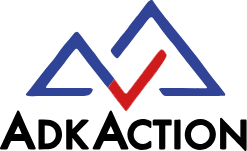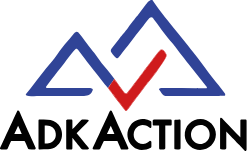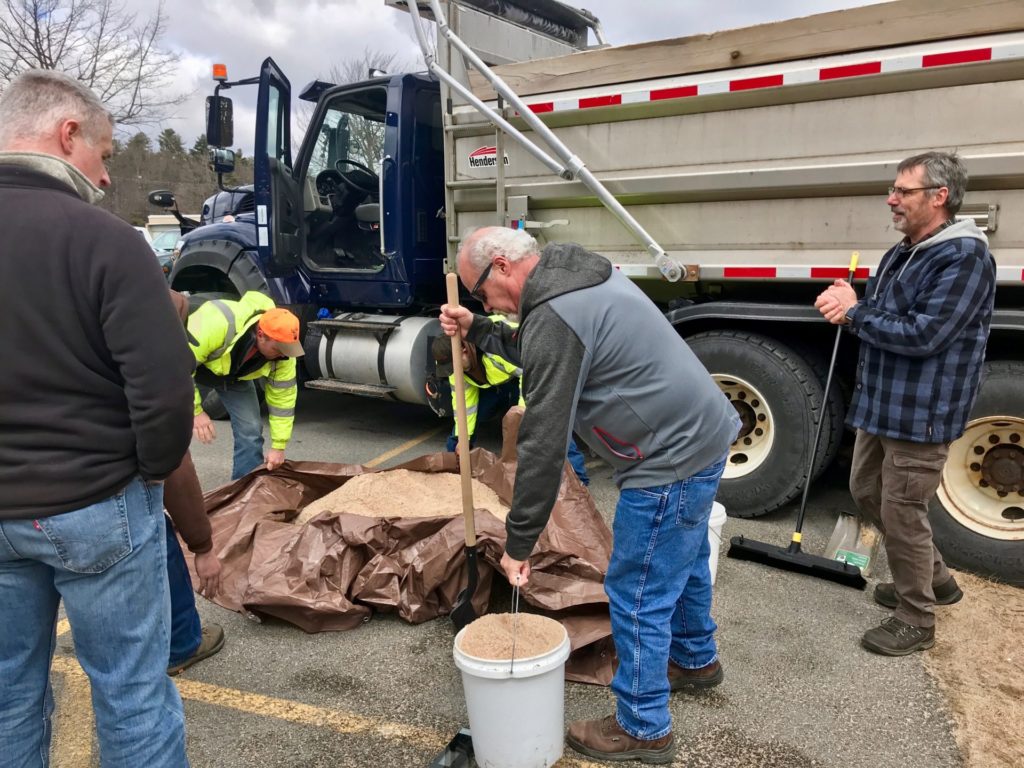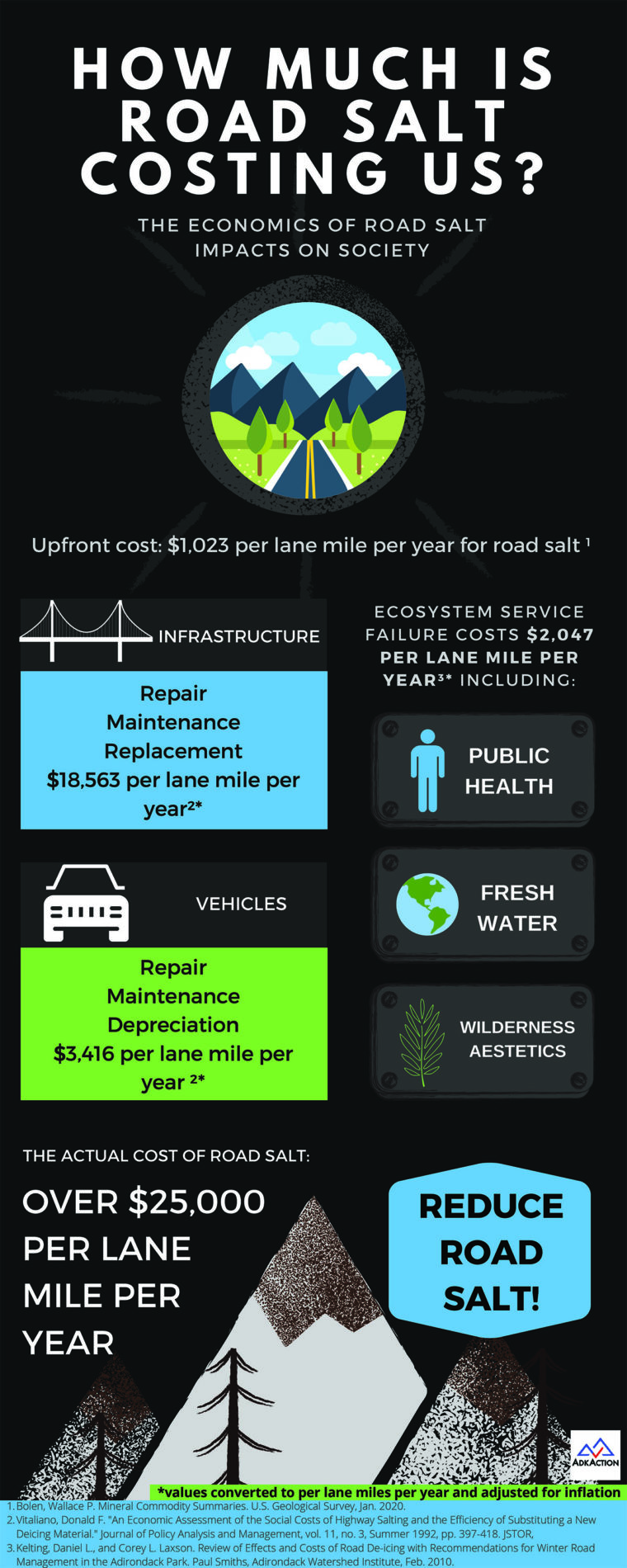The following paper was written by Kelsey Bennett, AdkAction’s 2020 Road Salt Fellow from Colgate University, reflecting her views and research on the problem of road salt overuse.
Over 1.2 million tons of road salt were spread across New York roadways this past winter to help keep roads passable during snow and ice events (State). However, recent economic research has shown road salt is costing governments and taxpayers billions in damages to bridges and vehicles; industry losses; and ecosystem service failures. In order to become a more environmentally-friendly and economically-savvy society, road salt needs to be understood in a new way that encourages appropriate use of sodium chloride as just one tool in the toolbox of winter road management techniques.
The solution is to change the way we think about winter roads.
One of the most widely accepted solutions is to still use road salt but use less and instead focus on efficiency, training, equipment upgrades (especially use of brines), and changing expectations of winter roadway conditions. The goal is long-term sustainability through environmental health, public health, and economic success. By reducing salt use, municipal governments will be able to save thousands of dollars each year and promote long-term sustainability.
Take for example, a local government switching from spreading rock salt to prewetting with brine. Brine is a solution containing sodium chloride or other deicing agents diluted in water. When comparing brine and rock salt, brine uses less sodium chloride for the same level of effectiveness as rock salt and the salt in brine is less likely to bounce off the roadway during the application process making it more efficient. (Kelting 59-60). Brine is also cheaper than rock salt; in 2019, brine was sold for $10.00 per ton while rock salt was sold at $62.00 per ton (Bolen, 138-139).
The hidden costs of road salt
The overuse of road salt has costly consequences for governments, with one of the most expensive being corrosion to infrastructure and vehicles exposed to excess sodium chloride. As a result, governments require increased funding for repairs, restoration, and replacements. Research suggests that damage to bridges alone is costing hundreds of millions to billions of dollars of damage each year. Schwartzberg estimates, “Every year, $8.3 billion is spent on corroding highway bridges,” (14). Corrosion caused by road salt not only impacts bridges, but it also affects government vehicles and machinery, roadways, fire hydrants, signs, and traffic lights – all of which are paid for through taxes.
Road salt also disrupts ecosystem services such as water and nutrient cycling, soil stabilization and recreation. Looking at the Adirondack park, salt use reduced the value of ecosystem services $2,320 per lane mile per year [$2,729 per lane mile per year when adjusted for inflation], (Kelting, 24). These ecosystem services provide clean fresh water to communities and promote healthy forests.
Governments are already facing public health problems and lawsuits as people drink water contaminated with the chloride-saturated runoff. Particularly vulnerable individuals access water through private wells and are located near busy roads. For those whose wells have been compromised, they must pay to relocate their well or compensate by purchasing large amounts of bottled water. Similarly, farmers are also vulnerable because salty water is linked to livestock death. As a result, individuals often look towards governments to support them because road salt pollution was caused by the Department of Transportation’s salt use habits.
Another area of concern when looking at the Adirondack park is the tourism industry. Tourism is a main source of income for many individuals living near parklands. A study was conducted in the Adirondack Park using a travel cost method and deriving a willingness to pay to determine, “an aggregate aesthetic damage of $3.1 million per year results when the 1.55 per capita cost is multiplied by the estimated 2.0 million nonwinter person trips to the state-run camps and privately operated camps in the Adirondacks,” (Vitaliano, 406-407). Taking into account inflation, this value increases to $4.7 million worth of damage to that park’s aesthetics each year as a result of road salt use. With the threat to the park’s natural aesthetics, the local governments stand to lose millions of dollars in potential future revenues for their tourism supported businesses.
The beginnings of national change
As these damages accumulate, it becomes increasingly more costly and difficult to reverse the effects of salt overuse. Other states and local governments have noted this risk and have taken steps to change their winter operating procedures. For example, Dane County’s “Be Salt Wise” campaign in Wisconsin seeks to limit public and private road salt use and change behaviors for winter travel. Other cities have tried seeking alternatives to sodium chloride including, calcium magnesium acetate, magnesium chloride and even more out of the box solutions such as beet juice and cheese brine. All of which are imperfect and pose their own costly problems.
Conclusion
There is no ideal solution in this situation because as troublesome as salt is, it is effective at melting snow and ice. At this point, the best solution is to invest in efficient plows and brine spreading equipment to reduce the amount of salt entering the environment. While there are upfront costs for new brine spreading and GPS equipment, state and local governments will regain these losses and quickly move to saving money that can be allocated towards other areas in need of funding.
References
- Bolen, Wallace P. Mineral Commodity Summaries. U.S. Geological Survey, Jan. 2020.
- Kelting, Daniel L., and Corey L. Laxson. Review of Effects and Costs of Road De-icing with Recommendations for Winter Road Management in the Adirondack Park. Paul Smiths, Adirondack Watershed Institute, Feb. 2010.
- Research, Adirondack, compiler. The Road Map to Reduce Road Salt. Illustrated by Brendan Wiltse et al., Saranac Lake, Adirondack Action.
- Schwartzberg, Ezra. New York’s Hidden Cost of Road Salt. Adirondack Research, Mar. 2016. Adirondack Research LLC.
State Winter Maintenance Data and Statistics. Clear Roads, 2 Mar. 2020. Clear Roads, clearroads.org/winter-maintenance-survey/. - Vitaliano, Donald F. “An Economic Assessment of the Social Costs of Highway Salting and the Efficiency of Substituting a New Deicing Material.” Journal of Policy Analysis and Management, vol. 11, no. 3, Summer 1992, pp. 397-418. JSTOR, www.jstor.org/stable/3325069. Accessed 5 June 2020.
- Wisconsin Salt Wise. www.wisaltwise.com/. Accessed 10 June 2020.





